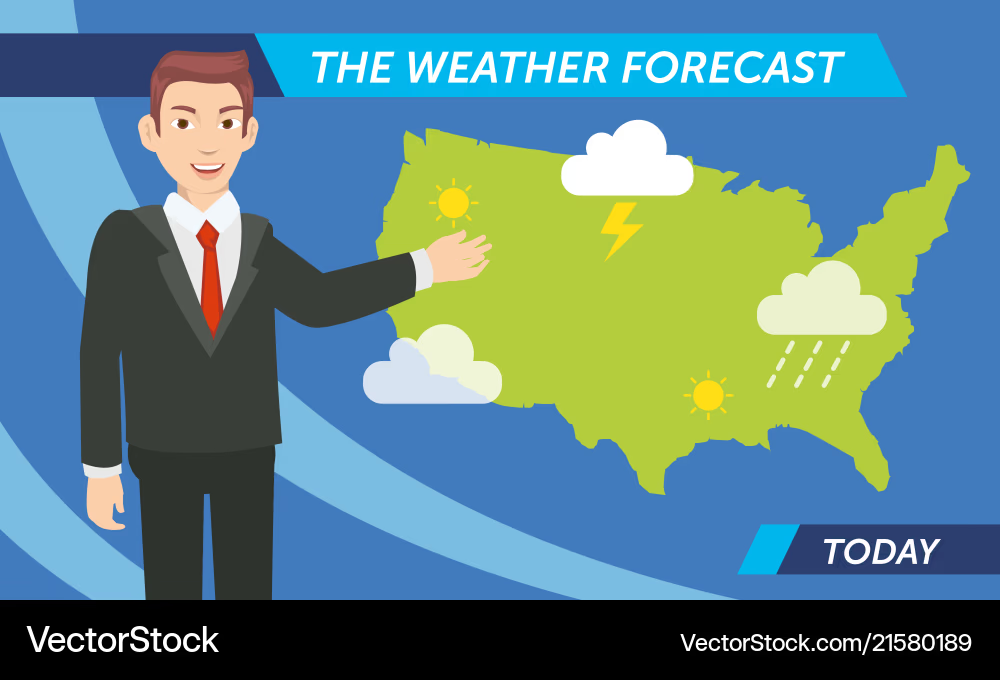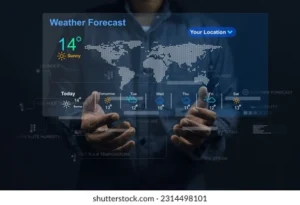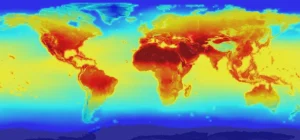Climate Prediction: Understanding, Tools, and Future Challenges
Introduction
Climate change is one of the most pressing issues of our time, influencing ecosystems, economies, and societies across the globe. To adapt and mitigate its impacts, climate prediction plays a critical role. By using advanced models, historical data, and scientific methods, climate prediction provides insights into future climate conditions at global, regional, and even local levels. These predictions help policymakers, businesses, farmers, and communities prepare for extreme events, manage resources, and develop sustainable solutions.
In this article, we’ll explore the science behind climate prediction, the tools and technologies used, its applications, limitations, and the future of this evolving field.
What is Climate Prediction?
Climate prediction is the scientific process of estimating future climate conditions—such as temperature, rainfall, drought, and storms—based on data analysis, physics, and models. Unlike weather forecasting, which deals with short-term conditions (days or weeks), climate prediction spans longer time horizons—ranging from seasonal patterns to decades ahead.
For example:
-
A seasonal climate prediction may estimate rainfall patterns for the coming monsoon.
-
A long-term climate projection may forecast global temperature rise over the next 50–100 years under different carbon emission scenarios.
The Science Behind Climate Prediction
Climate prediction relies on a combination of observational data, physics-based models, and computational simulations.
1. Observational Data
Data sources include:
-
Weather stations (temperature, wind speed, humidity)
-
Satellites (atmospheric composition, ocean currents, polar ice measurements)
-
Ocean buoys (sea-surface temperature, El Niño monitoring)
-
Ice cores and tree rings (historical climate patterns)
This data forms the foundation for model calibration and validation.
2. Climate Models
The most important tool for climate prediction is the General Circulation Model (GCM). These simulate the Earth’s climate system by solving complex equations of motion, thermodynamics, and radiation transfer.
-
Atmospheric Models – simulate winds, clouds, and temperature.
-
Ocean Models – simulate currents, sea surface temperatures, and heat absorption.
-
Coupled Models – combine atmosphere, ocean, land, and ice to capture interactions.
3. Emission Scenarios
Predictions often depend on future greenhouse gas emissions. Climate scientists use Representative Concentration Pathways (RCPs) or Shared Socioeconomic Pathways (SSPs), which represent possible futures (e.g., high-emission vs. low-emission scenarios).
Types of Climate Prediction
-
Short-term Climate Prediction (Seasonal to Annual)
-
Predicts rainfall, drought, or storm intensity for the next few months.
-
Example: India’s Meteorological Department predicting monsoon rains for agriculture planning.
-
-
Medium-term Prediction (Decadal Scale)
-
Assesses average temperature or precipitation trends for the next 10–30 years.
-
Useful for infrastructure planning and energy strategies.
-
-
Long-term Climate Projections (Century Scale)
-
Predicts changes in global climate over 50–100 years.
-
Used in global reports like the IPCC (Intergovernmental Panel on Climate Change) assessments.
-
Tools and Technologies in Climate Prediction
1. Supercomputers
Climate models involve trillions of calculations. Supercomputers like IBM’s Summit or Japan’s Fugaku simulate Earth’s systems at high resolution, producing more accurate forecasts.
2. Artificial Intelligence (AI) and Machine Learning
AI enhances climate prediction by analyzing huge datasets and detecting patterns beyond traditional models. For example:
-
DeepMind’s GraphCast model predicts weather more efficiently than conventional systems.
-
AI algorithms improve cyclone path forecasting and flood risk assessment.
3. Remote Sensing
Satellites such as NASA’s Terra and Aqua provide real-time data on clouds, aerosols, and sea temperatures. Remote sensing enables global monitoring of climate indicators.
4. Data Assimilation Systems
These integrate observational data into models to reduce errors. It’s like “feeding live data” into simulations to refine predictions.
Applications of Climate Prediction
Climate prediction isn’t just an academic exercise—it has practical, real-world applications across multiple sectors:
1. Agriculture
-
Farmers rely on seasonal rainfall predictions to plan sowing, irrigation, and harvesting.
-
Drought forecasts help governments distribute water resources efficiently.
2. Disaster Preparedness
-
Cyclone and flood predictions enable evacuation planning.
-
Early warnings reduce economic losses and save lives.
3. Energy and Infrastructure
-
Hydropower generation depends on rainfall predictions.
-
Renewable energy planning (solar, wind) benefits from climate models predicting weather variability.
4. Public Health
-
Predicting heatwaves or changing disease vectors (like malaria spreading in new regions) allows health systems to prepare.
5. Policy and Climate Action
-
Governments use long-term climate predictions for international agreements like the Paris Agreement.
-
Urban planners design climate-resilient cities using climate data.
Challenges and Limitations of Climate Prediction
Despite advances, climate prediction faces several challenges:
-
Complexity of Climate Systems
-
The Earth’s climate involves non-linear interactions between atmosphere, oceans, land, and biosphere. Small changes can lead to large uncertainties.
-
-
Data Gaps
-
Many regions, especially in developing countries, lack reliable observational data. This reduces model accuracy.
-
-
Resolution Limits
-
Global models may not capture local variations. For example, predicting rainfall for a small town is harder than for a continent.
-
-
Uncertainty in Emissions Scenarios
-
Future human behavior (e.g., fossil fuel consumption, deforestation, green policies) is unpredictable.
-
-
Computational Costs
-
Running high-resolution climate models requires enormous computational power, limiting accessibility for smaller institutions.
-
Case Studies in Climate Prediction
1. El Niño and La Niña Forecasting
The ENSO (El Niño–Southern Oscillation) cycle significantly affects global rainfall and temperature patterns. Advanced ocean monitoring and models now allow seasonal predictions of El Niño events, aiding agriculture and disaster management worldwide.
2. IPCC Climate Reports
The IPCC’s Sixth Assessment Report (2021–2022) projected that if emissions continue unchecked, global warming may exceed 1.5°C by 2030. These predictions shape global policy and climate negotiations.
3. Hurricane Forecasting in the U.S.
The National Hurricane Center (NHC) uses climate models to predict hurricane intensity and paths, reducing casualties through timely evacuations.
The Future of Climate Prediction
The next decade promises transformative advances in climate prediction:
-
Higher Resolution Models
-
Supercomputers will allow models with finer grids, enabling more accurate regional forecasts.
-
-
Integration of AI and Quantum Computing
-
AI-driven models and quantum simulations will process vast datasets in real time, improving prediction accuracy.
-
-
Citizen Science and IoT Sensors
-
Local weather stations and community-driven data collection will fill observational gaps.
-
-
Probabilistic Forecasting
-
Instead of a single deterministic outcome, predictions will provide probabilities (e.g., 70% chance of above-average rainfall), helping decision-makers plan more flexibly.
-
-
Climate Services for All
-
Governments and organizations aim to make climate prediction data freely accessible, ensuring small farmers, local planners, and vulnerable communities benefit equally.
-
Ethical and Social Considerations
-
Equity in Access: Poorer nations often lack resources to utilize advanced predictions. Ensuring equitable access is vital.
-
Transparency: Policymakers must communicate uncertainties clearly to avoid public mistrust.
-
Action Gap: Predictions are only useful if governments and individuals act on them—something often missing in climate strategies.
Conclusion
Climate prediction is not just a scientific pursuit—it is a lifeline for humanity in the face of climate change. By combining observational data, advanced models, AI, and global cooperation, scientists are steadily improving our ability to forecast the future of our planet’s climate. While challenges remain—such as uncertainties in emission scenarios, data gaps, and computational costs—the progress so far offers hope.
In the coming years, as technology advances and policies align with science, climate prediction will become more precise, accessible, and impactful. Ultimately, the real challenge lies not just in predicting the climate, but in using those predictions to create a sustainable, resilient, and equitable future.
https://bitsofall.com/https-yourdomain-com-robust-ai-models-building-reliability/
Bio-Inspired Machine Learning: Learning from Nature to Build Smarter AI






